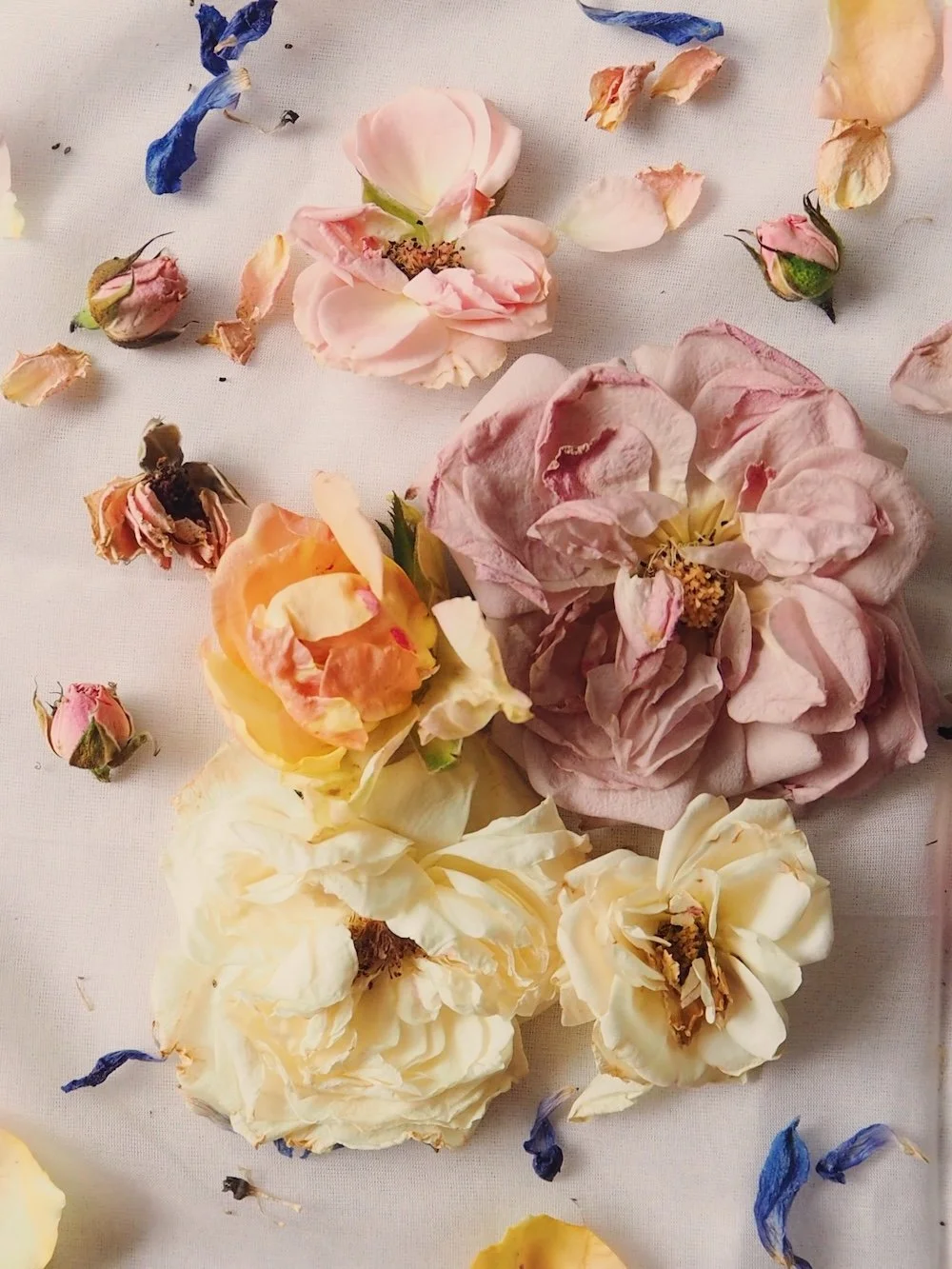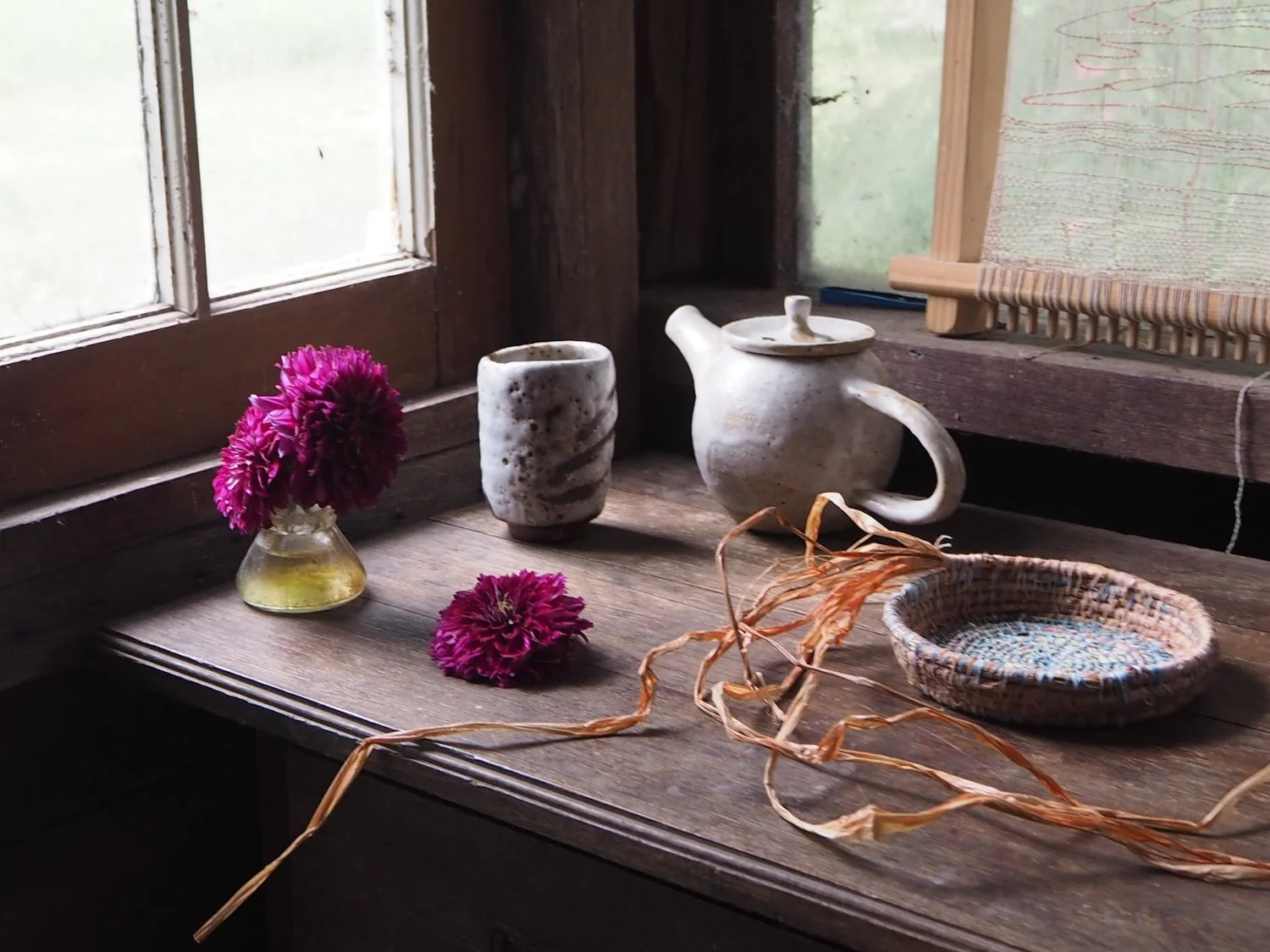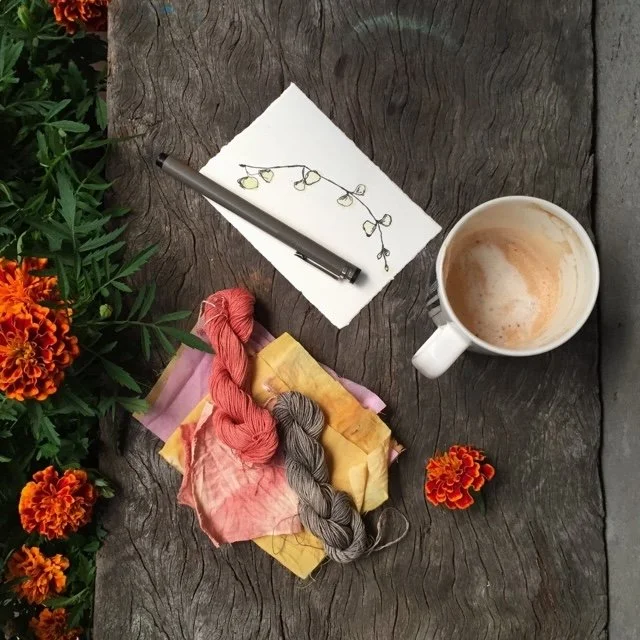How to start (and grow) a creative business, in the simplest way possible
You’ve decided it’s time. You’ve been making and creating for years, and now you’re ready to turn your creative passion into something more. Maybe you’ve already sold a few pieces, or maybe you’re still in the “dreaming” stage-imagining a business that feels good, not one that burns you out.
You don’t have to hustle your way into success. You don’t have to do everything all at once. And you definitely don’t have to build your creative business at the expense of your joy.
You get to build it slowly. Thoughtfully. In a way that works with your life, not against it.
Whether you’re a painter, stitcher, potter, mixed-media maker, or photographer, or any other version of ‘creative’, this is your reminder that it’s okay to build your business at your own pace.
Let’s walk through how to start, and grow, your creative business.
Finding an idea for your business: Begin with what you already have
So often we feel like we can’t start a business until everything looks “official”, the perfect logo, the perfect name, a cohesive product line or fully fledged out services. But that’s just noise, a distraction- another reason to keep putting it off. Procrastinating means we can’t fail. It also means we don’t follow our dreams.
You already have what you need: your creativity, your skills, and your story.
Start with what’s already in your hands- literally. The pieces you’ve made. The ideas you’ve sketched. The photographs you’ve taken. You don’t need to reinvent everything before you begin.
When I first started my business, I sewed some little tote bags and took them into a local shop. Simple as that! I saw they had a call-out for local makers, and I put my hand up. Then I decided I wanted to do more, and different, and leaned into my artistic self deeper and deeper. And each thing that showed up as a possibility simply become the next step that I took.
Start small with a Minimum Viable Product (or Service)
Once you’ve got an idea (or a few), the next step isn’t to build the whole business, it’s to test one small part of it. This is where the idea of a Minimum Viable Product, or MVP, comes in.
Your MVP is the simplest version of your product or service that lets you share your idea with the world and see how people respond. Think of it as your first experiment, a gentle way to learn what works before investing too much time or money.
This is a wonderful way to not overwhelm yourself, but instead simply take that very first step. There’s a certain freedom in just beginning - knowing that you’ll likely make mistakes, but that you can solve them along the way.
I like to think of it as jumping and growing your wings on the way down. Scary but also so wonderful. Your wings don’t grow by standing still!
This could look like:
➛ Selling a small batch of your handmade pieces at a local market and shop.
➛ Offering one creative workshop instead of a full course series.
➛ Creating a mini print run instead of launching a full collection.
➛ Testing one service with a few clients before formalising your packages.
You’re not trying to make it perfect, you’re trying to learn. What do people respond to? What questions do they ask? What excites them (and equally importantly, you)?
Starting with an MVP helps you move past the “dreaming” stage and into doing, without overwhelming yourself. It’s about gathering information and confidence while keeping your energy intact.
Remember, slow business doesn’t mean standing still, it means moving thoughtfully, one small test at a time.
If you’re unsure if you’re ready to start selling your work I have this post that will help you decide if it’s time move your hobby to a business, and start earning income from doing the thing you love doing!
Slow business starts by working with what’s there, instead of constantly trying to chase something new. It’s about letting your creativity unfold naturally - the same way it does when you’re making art.
Define your version of “enough”
When you start a creative business, it’s easy to get swept up in other people’s goals - the six-figure talk, the endless product launches, the constant growth. I’m exhausted just thinking about it.
But sustainable business begins with knowing what enough looks like for you.
➛ Maybe your “enough” is selling one piece a week.
➛ Maybe it’s earning a side income that lets you work one less day at your job. To find out more about multiple income streams for artists, crafters, or designers have a read of this.
➛ Maybe it’s simply being able to pay for your materials.
Whatever your version of enough is, write it down. Let that be your guiding star instead of someone else’s definition of success. Return to it regularly. It’s easy to get caught up in the noise of the online world.
When you know your version of enough, you stop building a business that constantly demands more from you, and start building one that supports you.
For tips on how to price your handmade art or work for profit see this post.
Create space for both life and making
If you’re starting your creative business while also working, parenting, studying, health issues or managing other commitments (which most of us are!), then you already know how precious your time and energy are.
A slow business honours that. Remember we’re building a business that works for you.
I have built my whole business while raising children, and building a house. I’ve had no choice but to make my business work alongside my busy family life. This is what sustainable business means - working out what works best for you, at each phase of your life.
But this doesn’t mean constantly putting your business on hold. Your family needs to honour the work you’re doing, so that you can dedicate time to what you need to do to grow this wonderful business that you want. A great way is to set yourself limits to what you can achieve, be reasonable and flexible, and gentle on yourself.
Instead of “I’ll do it all this weekend,” think “what’s one small thing I can do this week?”
Small consistent steps lead to big changes.
➛ Maybe it’s photographing your products.
➛ Maybe it’s opening an Etsy shop.
➛ Maybe it’s simply sitting down to write your “About” page.
Break things down into small tasks each day, or each week. Be prepared to go slow - it’s ok!
Step by step, week by week, your business will grow and you’ll still have energy left to enjoy your creative process.
My season reset workbook will help you create a plan and help you achieve your business goals- get it here.
Learn how to photograph your products with my friend Rebecca’s new course, The Art of Phone Photography for Artists and Makers.
Build connection before you build sales
Before you think about marketing plans or product ranges, focus on community. Slow businesses grow through connection - one real person at a time.
You don’t need to chase followers or likes (these are increasingly harder to get now). You just need to talk to people who get your work.
Start with your existing circles, your family, friends, local makers, small business groups, online communities. Tell them what you’re making. Share why it matters to you.
When your business story is rooted in genuine connection, sales become a natural byproduct of that trust.
And when it comes time to share online, remember: you’re not shouting into the void. You’re inviting people into your creative world.
I started selling via Instagram because I was connecting with people, not growing a following. The people who purchased from me, or came to my workshops, were names I knew, friends I chatted with online, real people in my life.
Even all these years later, I still believe this to be the most vital way of starting and growing your business. As an artist and creative in this age of increasing ai it’s even more important to embrace our real and personal connections.
Where to find your customers online
Start by thinking about where your ideal customers already spend time. Are they searching Pinterest for creative tutorials? Watching YouTube videos about handcrafts? Joining Facebook groups or following accounts on Instagram?
Here’s how to begin:
➛ Search where they search. Type your products or services into Google, Pinterest, or Etsy and see what appears. What kind of content or brands come up? If you can find similar products or services to yours this is a good indicator your people are on there, and that there is a market for what you’re selling.
➛ Listen before you post. Spend time engaging in spaces where your ideal people already are; comment, ask questions, be part of the conversation. Community is a huge part of growing a business online.
➛ Focus on one or two platforms instead of trying to be everywhere. You’ll build trust faster when you show up consistently in the same places. If you don’t like a platform, don’t use it even if someone else tells it the ‘must’ place to be.
➛ Share what helps. Whether it’s tutorials, insights, or stories, offer value before you sell. People connect deeply when they feel supported or inspired. Showing the behind the scenes of you making your products, or your creative process, is a great start to connecting and sharing.
➛ Grow your email list. Having a newsletter that provides your audience with inspiring, useful content is a great way to build trust and connection. Unsure what to write to your list, see this post here.
And don’t forget: your website is your home base. All your other platforms should lead people there: your blog, your newsletter sign-up, your shop. It’s where you can truly tell your story without limits.
Learn as you go - you don’t have to know it all
You don’t have to have a business plan, a niche, or a strategy mapped out to begin. (In fact, most creative businesses evolve through experimentation, not perfection.)
When you start slow, you give yourself permission to learn while you grow.
You’ll try things that don’t work. You’ll make adjustments. You’ll find your rhythm. And that’s exactly how it’s meant to go.
Curiosity is your best business skill. Keep it alive.
Approach things with a sense of curiosity, test new things. Not everything will work. Assess why it didn’t and move on.
Keep on moving and growing. ‘Failures’ are inevitable. We can’t expect everything to work (or even work right away).
Remember, we see people’s highlight reels online, not all the hard work, tears and ‘failures’ that went into that ‘overnight success’.
Celebrate small milestones
Every sale. Every kind comment. Every little “oh wow, I made this happen.”
Those moments matter.
Your creative business is more than numbers, it’s the feeling of seeing your work out in the world, loved and appreciated. So celebrate the steps. Take a photo. Journal about it. Treat yourself to a good coffee.
You’re doing something brave, turning your creativity into something that supports your life.
Remember this:
You don’t have to go fast to build something meaningful. You just have to keep going.
Start where you are. Work with what you have.
Grow slowly, intentionally, and in your own way.
That’s how you build a creative business that lasts, one that fits your life, not the other way around.
Want more support while you grow your creative business?
Have a look at my free resources page here, with help, guides, and information about connecting with your community, growing a newsletter list, and more creative business tips.
I’d love to hear your thoughts, or perhaps fears, on starting a business. Where are you up to? What’s the next steps for you?




